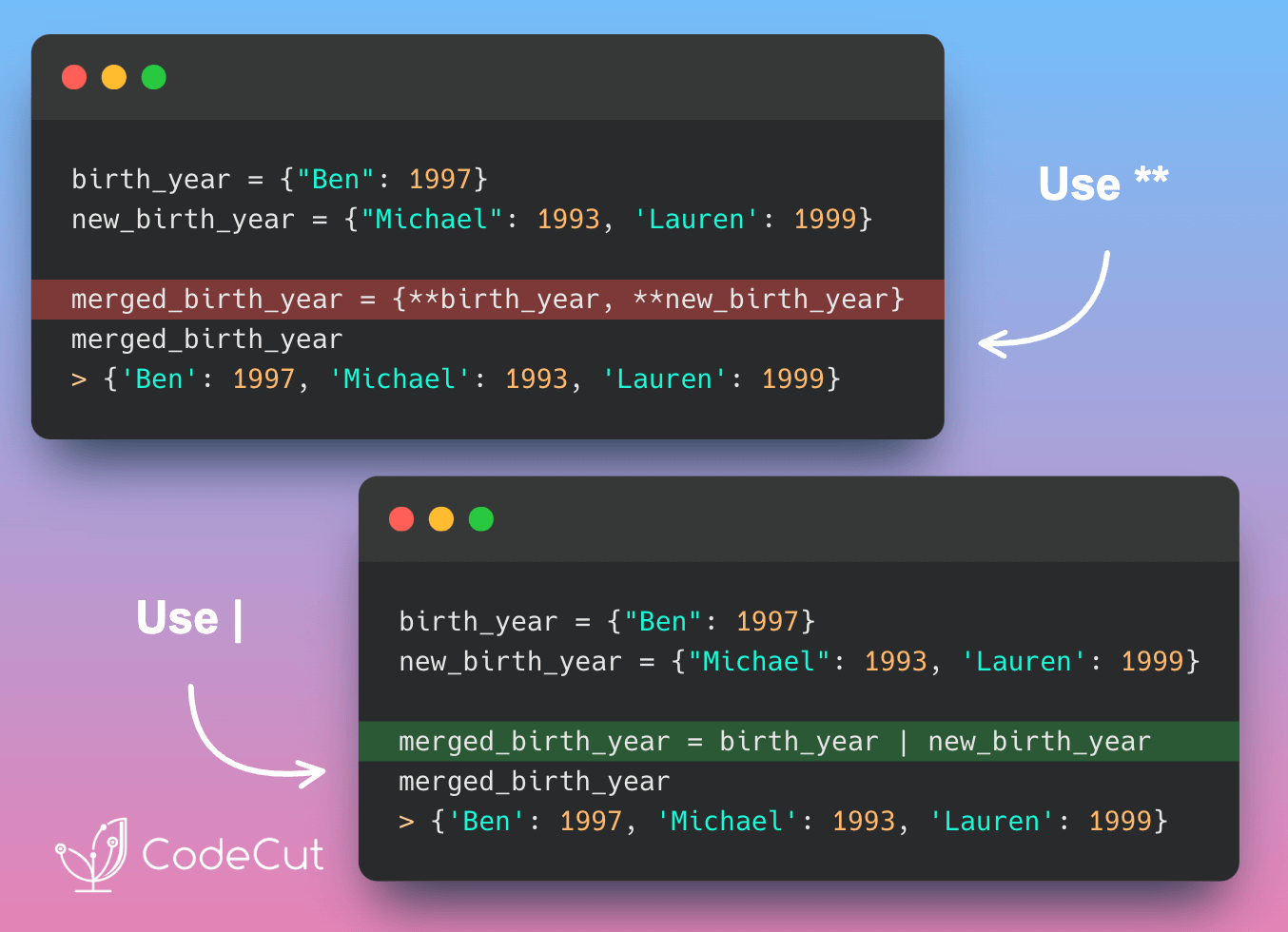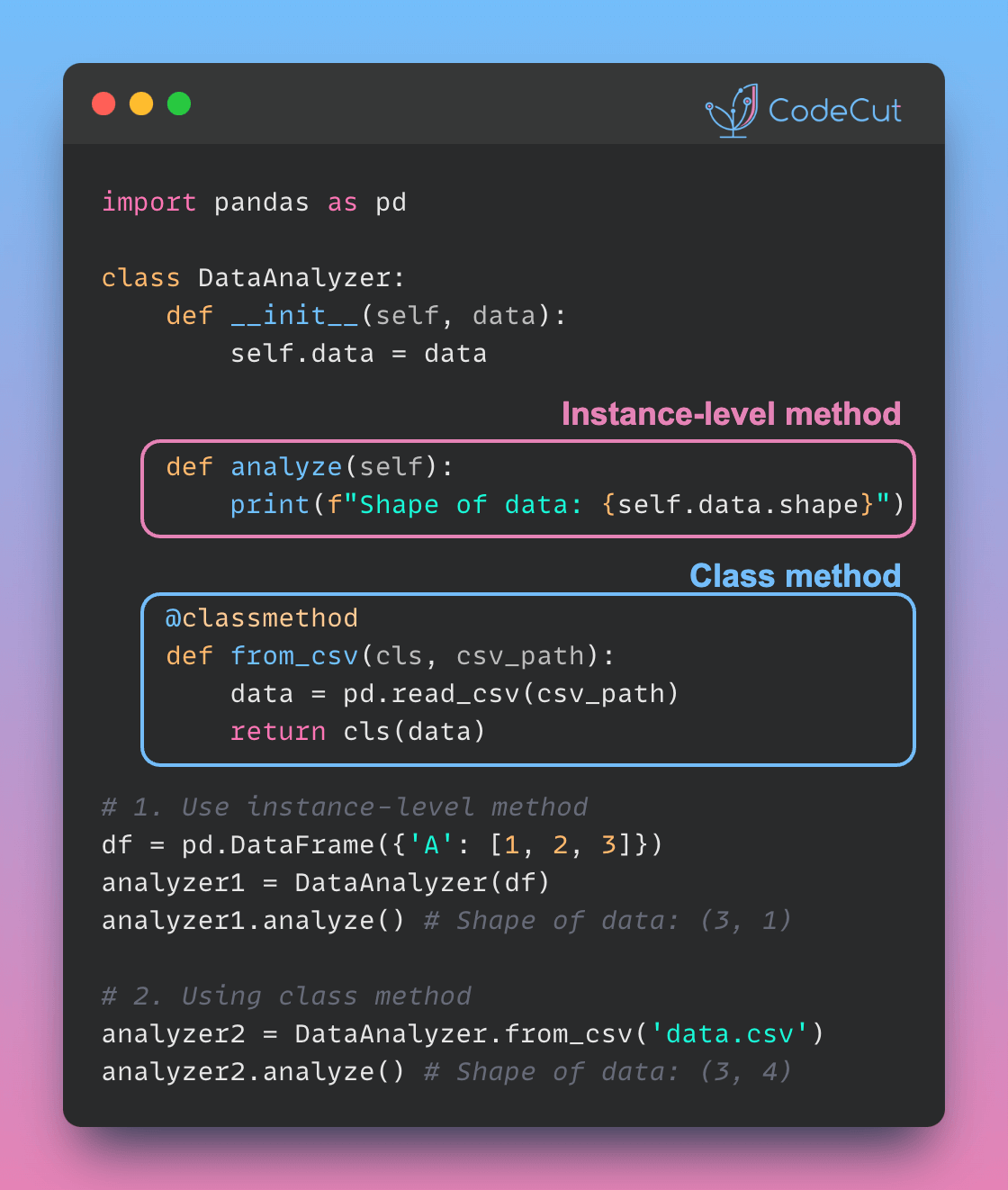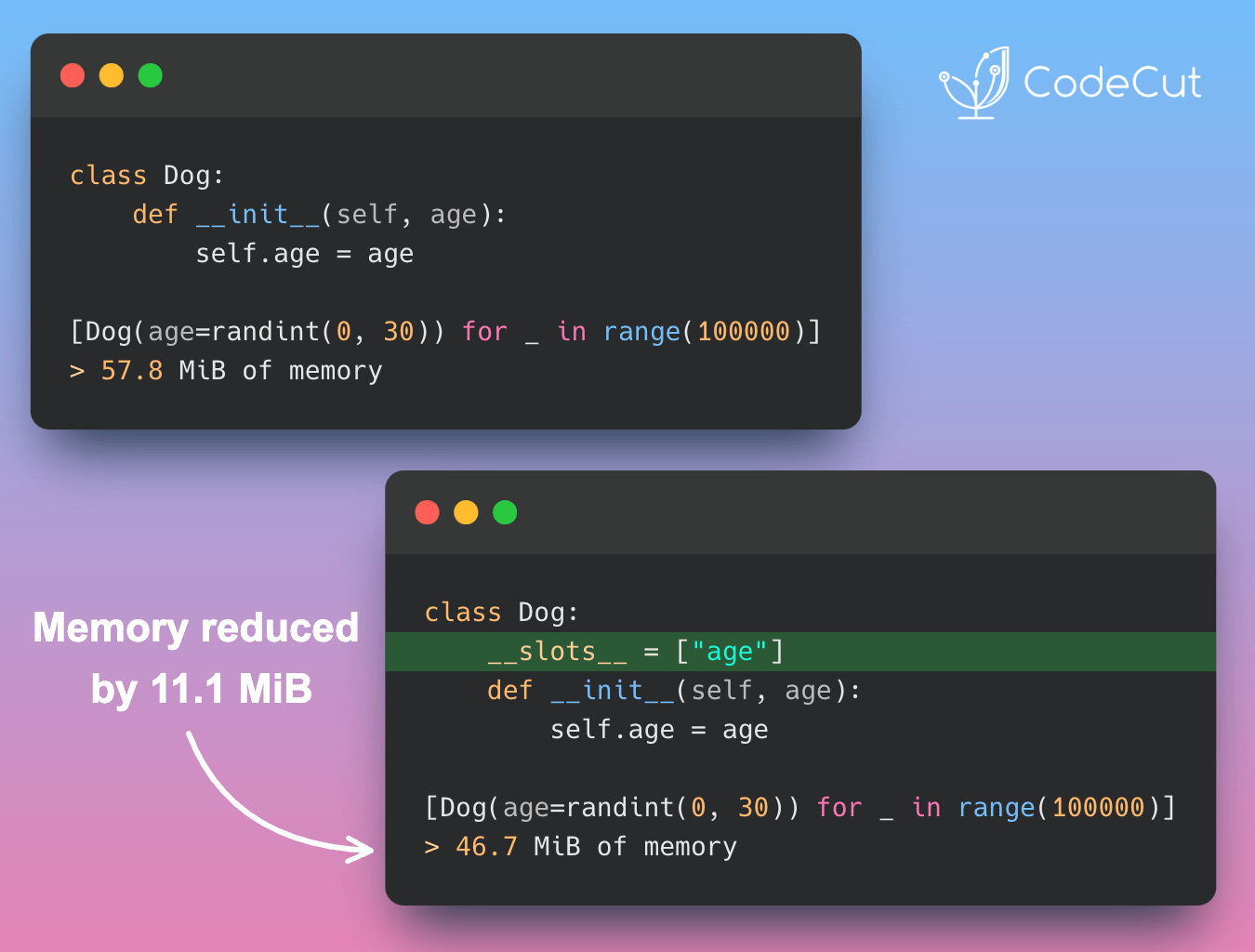Before Python 3.9, there were two common ways to achieve merge dictionaries: using the update method or the ** operator. However, both approaches had their drawbacks. In this post, we’ll explore the latest syntax for merging dictionaries in Python and how it improves upon the previous methods.
The Old Ways: update and **
Using update
One way to merge dictionaries is to use the update method. This approach modifies the original dictionary, which can lead to unexpected behavior.
birth_year = {"Ben": 1997}
new_birth_year = {"Michael": 1993, 'Lauren': 1999}
birth_year.update(new_birth_year)
print(birth_year)
# {'Ben': 1997, 'Michael': 1993, 'Lauren': 1999}As you can see, the update method modifies the original dictionary birth_year.
Using **
Another approach is to use the ** operator. This method creates a new dictionary, but the code can become less readable.
birth_year = {"Ben": 1997}
new_birth_year = {"Michael": 1993, 'Lauren': 1999}
merged_birth_year = {**birth_year, **new_birth_year}
print(merged_birth_year)
# {'Ben': 1997, 'Michael': 1993, 'Lauren': 1999}The New Way: |
In Python 3.9 and above, you can use the | operator to merge two dictionaries. This approach creates a new dictionary without modifying the originals.
birth_year = {"Ben": 1997}
new_birth_year = {"Michael": 1993, 'Lauren': 1999}
merged_birth_year = birth_year | new_birth_year
print(merged_birth_year)
# {'Ben': 1997, 'Michael': 1993, 'Lauren': 1999}The | operator provide a concise and readable way to merge dictionaries in Python.
Conclusion
In conclusion, the latest syntax for merging dictionaries in Python is a significant improvement over the previous methods. The | operator provides a concise and readable way to merge dictionaries, making your code more efficient and easier to maintain. If you’re using Python 3.9 or above, make sure to take advantage of this new syntax!





